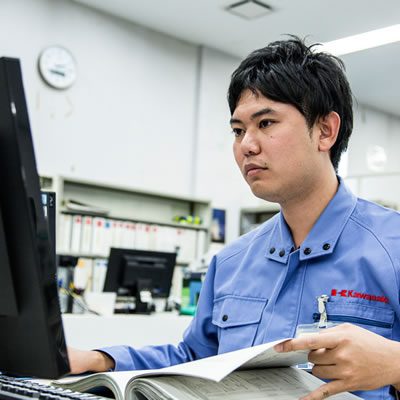For HESC Project Partner, Kawasaki Heavy Industries (KHI), liquefied hydrogen has long been the fuel of choice for its rockets. The company’s Tanegashima Space Centre is home to Japan’s largest liquefied hydrogen storage tank.
A similarly designed tank has been replicated for the HESC Project and is being used to store liquefied hydrogen at the Hastings liquefaction and loading terminal and the Kobe port-side storage facility.
Hydrogen is a fuel for the future, but for many years the challenges associated with its storage saw it overlooked.
Hydrogen is a bulky gas, requiring more space for storage than conventional natural gas. To decrease storage capacity and for ease of transportation, hydrogen can be stored in liquid form. This reduces the hydrogen to 1/800 of its original size. However, when liquefied hydrogen is poured into a conventional tank, it can rapidly heat up, causing evaporation and loss.
Hiroto Sato works in KHI’s Cryogenic Storage System Engineering Department and explains how the company overcame this obstacle.
“In order to keep the hydrogen in its liquefied state, we needed a method to ensure a storage temperature of -253°C, which is extremely low,” said Mr Sato.
“Given the large mass of liquefied hydrogen, permanent cooling was not an option because of the huge running costs involved.
“This is why we designed a cooling structure similar to a colossal thermos, so to speak.”

Rather than cool the hydrogen, the design of the tank prevents any possible rise in temperature as soon as the liquefied hydrogen is loaded inside.
This is achieved by a double-hull. The gap between the two hulls is filled with perlite, which is used for insulation, and the resulting design creates a system that allows for effective storage.
In addition, the tank had to be designed to suppress any kind of heat conduction, minimising any surface area where thermal transfer could occur.
The results speak for themselves.
“This liquefied hydrogen tank was built in 1987 and has been in operation ever since. To date, we have found no sign of deterioration in its cold insulation performance,” Sato said.
The nature of the storage technology means that the tank can be used to store clean hydrogen from any source – including Australia.